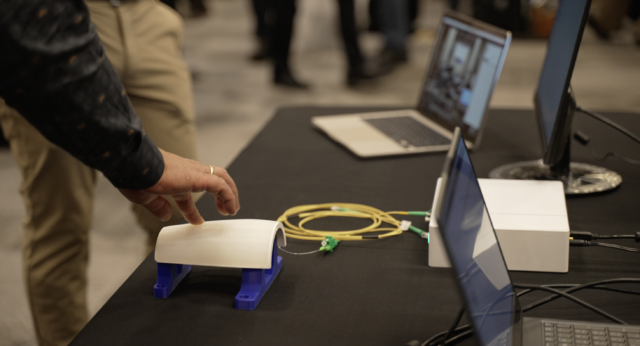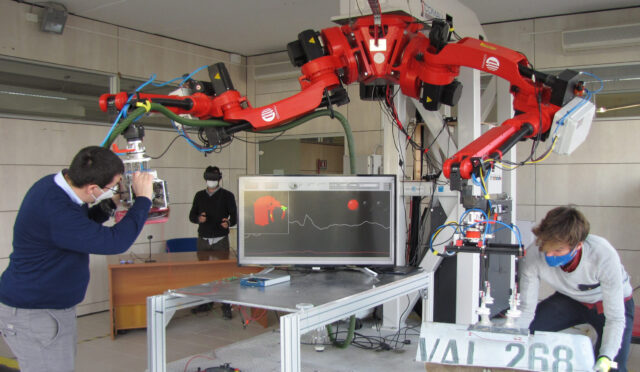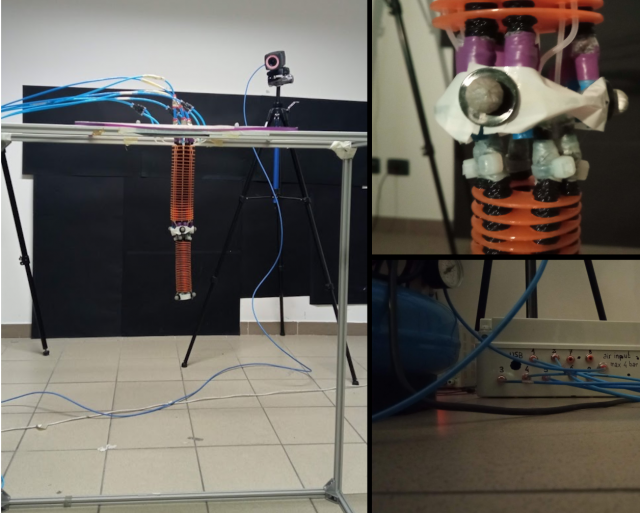HomeRobotic Database - Robotic platform | TERRINet

Tibi and Dabo robots
Tibi and Dabo are two mobile urban service robots aimed to perform navigation and human robot interaction tasks.Navigation is based on the differential Segway RMP200 platform, able to work in balancing mode, which is useful to overcome low slope ramps. Two 2D horizontal laser range sensors allow obstacle detection and localization.Human robot interaction is achieved with two 2 degrees of freedom (dof) arms, a 3 dof head with some face expressions, a stereo camera, text-to-speech software and a touch screen.They can be used to provide information, guiding and steward services to persons in urban spaces, either alone or both in collaboration.
Key features:
- Loquendo text-to-speech software with english, spanish and catalan languages
Possible applications:
- Teleoperation
- 2D navigation in urban environments
- Human robot interaction
- Multirobot systems
Technical specifications
| Computer: | Two industrial onboard computers and an external laptop for monitoring |
| Dimensions: | 60 (W) x 60 (L) x 160 (H) cm |
| Weight: | about 100 kg |
| Connectivity: | Onboard router for internal network with wi-fi and 3G connectivity |
| Battery: | up to 3h operation time and 8h charge time. |
| Platform: | Segway RMP200, maximum speed ~1m/s |
| Sensors: | Two laser Hokuyo UTM-30LX, Stereo camera Bumblebee2 (placed on the head), Touch screen |
| Head DoF: | 3 |
| Arms DoF: | 2 each |
| Face: | LED face expressions (mouth, eyebrows and cheeks) |
| Software: | ROS |
Access information
| Corresponding infrastructure | Universitat Politècnica de Catalunya IRI |
| Location | C/ Llorens i Artigas 4-6, |
| Unit of access | Working day |
Access history
PNP4HRI - Planning and plan execution in human-robot interaction
Luca Locchi
The main objective of the project is integrating a high-level planning and plan execution framework, Petri Net Plans (PNP), with perception and navigation functionalities of a robot involved in human-root interaction (HRI) tasks.
PNP is developed at DIAG Dept. Sapienza University of Rome (also deployed in the AI4EU platform) and the main objective of this project is to show its integration with functionalities for HRI tasks are developed at Universitat Politècnica de Catalunya - Institut de Robòtica i Informàtica Industrial (IRI) (also deployed in the AI4EU platform).
The integrated system will provide for high-level specification of goals and plans and will show improved robustness to complex situations arising from unpredictability of HRI tasks.
Work in progress (remote collaboration):
Researchers at DIAG and at IRI have worked together so far to: 1) define use cases where integration of PNP with HRI tasks are interesting, 2) analyze the individual components developed by the two partners and in particular the versions deployed in the AI4EU platform, 3) integration of AI4EU components.
Future work (physical visit(*)):
Complete and test the integration of the components during a physical visit of a student from Sapienza at IRI, experiments on IRI robots, and writing of a report (possibly a scientific paper) illustrating the work.
Expected impacts:
1) Tutorial on integrating planning and HRI components (in particular AI4EU components), 2) video showing implementation and execution of the use cases, 3) technical report / scientific paper describing the approach and the result.
(*) when possible according to COVID-19 restrictions.








